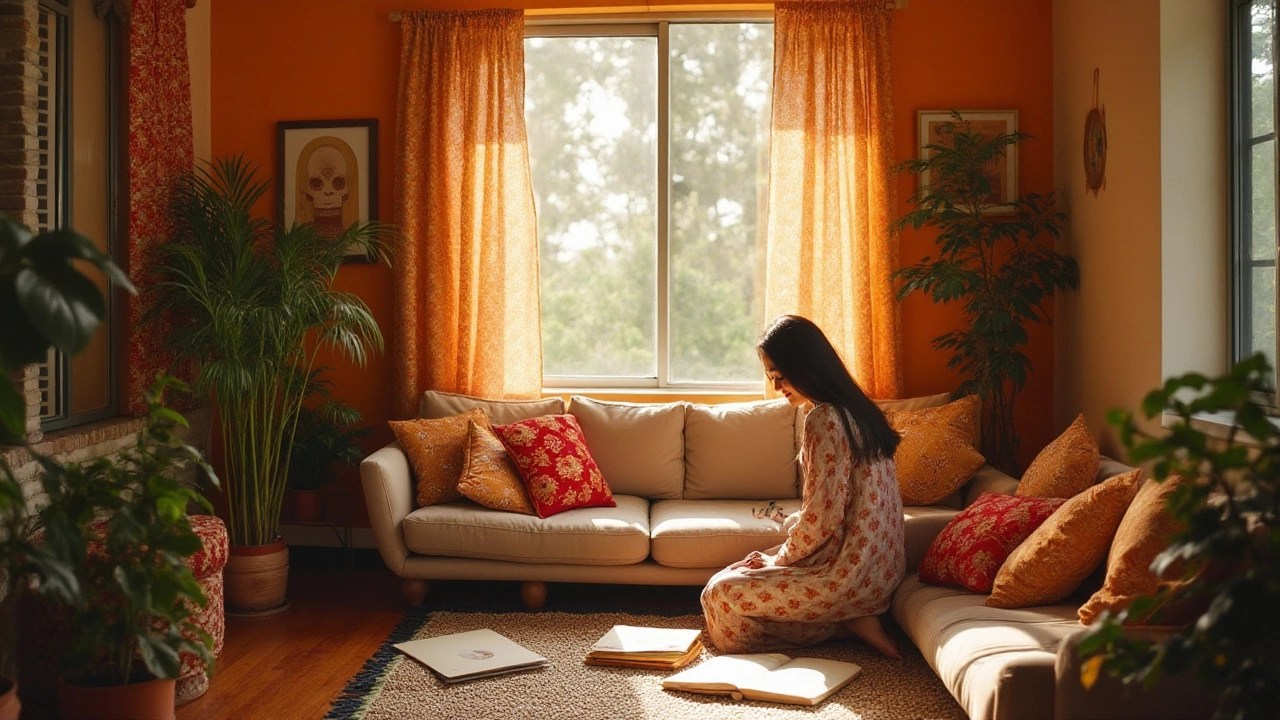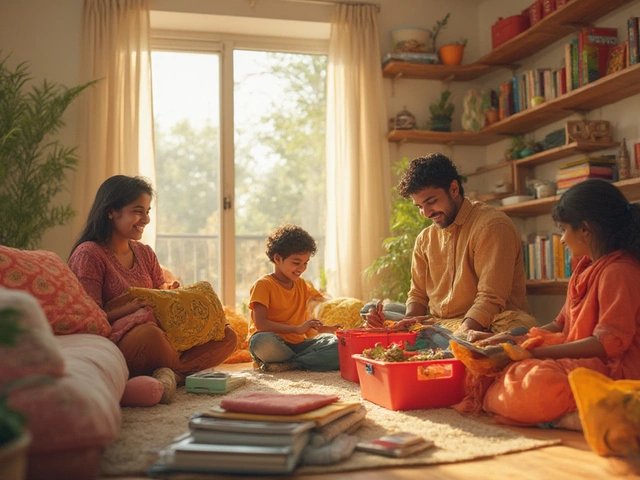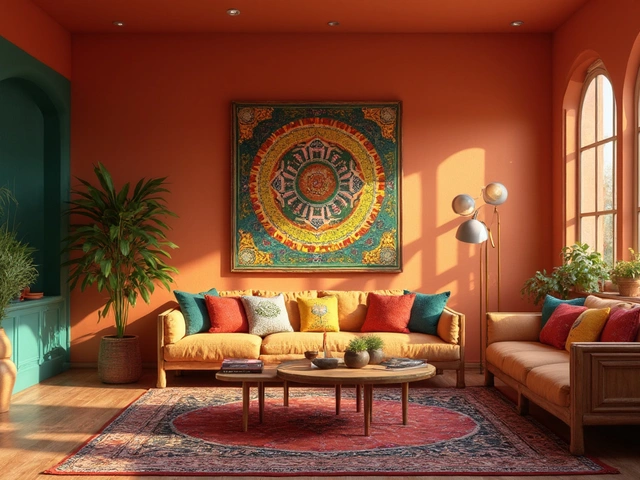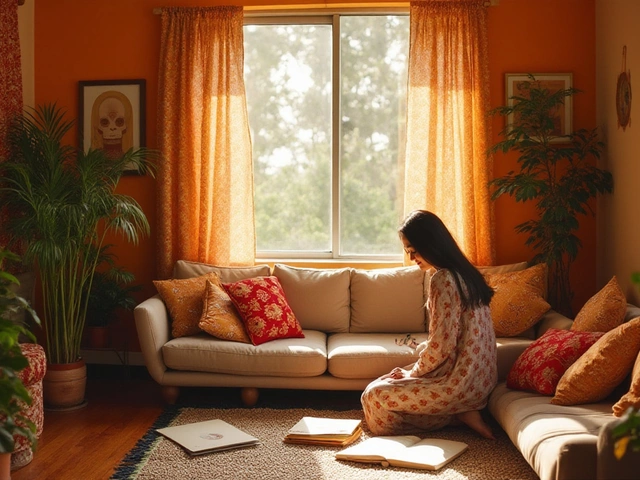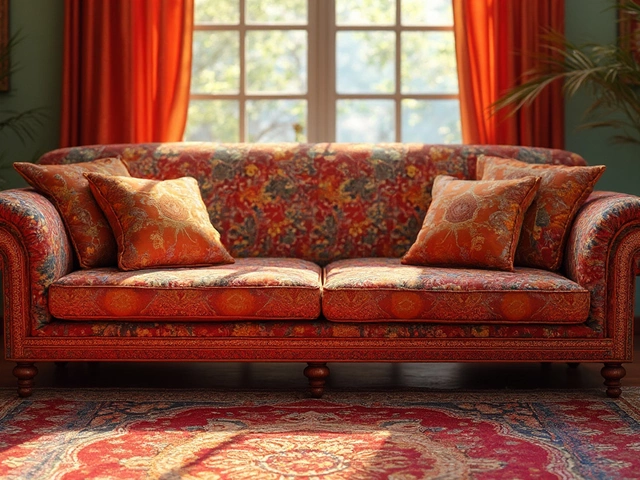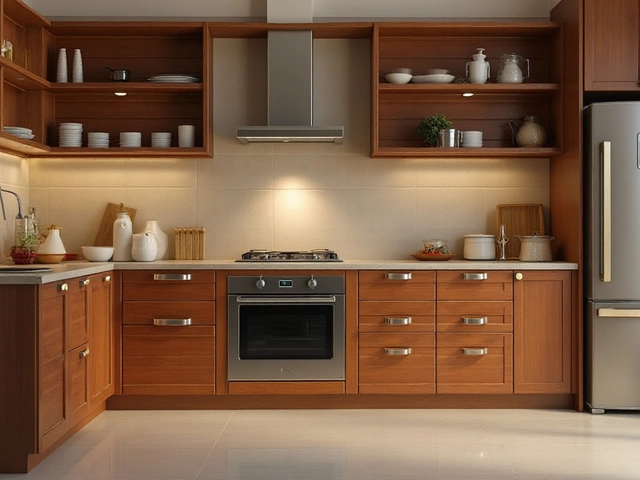Interior design might seem like an art best left to professionals, but with a little creativity and the right guidance, anyone can master the basics. Whether you're hoping to transform your personal space or just want to understand how colors and textures work together, embarking on a self-taught journey in interior design can be immensely rewarding.
Many budding decorators are turning to the wealth of resources available online and offline to kickstart their design dreams. From reading materials and tutorials to community forums and virtual workshops, the opportunities to gain knowledge and hone design skills are endless. With patience and practice, creating aesthetically pleasing interiors is a skill you can cultivate at your own pace.
Let's explore some key insights and actionable tips on how you can start teaching yourself the art of interior design today.
- Understanding the Basics of Interior Design
- Resources for Self-Learning
- Skills to Develop
- Practical Tips for Beginners
- Inspiration and Creativity
Understanding the Basics of Interior Design
Diving into the world of interior design for the first time can feel a little overwhelming, but grasping its fundamentals is the first step to creating beautiful and functional spaces. At its core, interior design is about more than just decorating; it's about creating harmonized environments that reflect personal style while adhering to basic design principles. These principles include balance, contrast, rhythm, scale, and proportion. By understanding these design tenets, even beginners can learn to craft spaces that are not only visually appealing but also practical and comfortable.
Balance in design refers to the distribution of visual weight within a space. Achieving balance involves the arrangement of objects, color schemes, and textures to make a room feel stable and grounded. This can be symmetrical, where elements on either side of a central point are mirrored, or asymmetrical, where different objects of equal visual weight create a stillness in the room. Next is contrast, which is the use of opposite elements, such as light vs. dark or rough vs. smooth, to draw attention and highlight features in a design. Such use of contrast adds depth and intrigue to a room.
Rhythm in interior design, similar to music, refers to a set pattern in a design that creates a sense of cohesion. This can be achieved through repetition of elements, progression of colors, or even alternating textures. This rhythm helps guide the eye around a room and can make a space feel unified. Additionally, scale and proportion are about ensuring that the size of objects within a room relates in harmony to each other and to the space itself. Objects should complement each other and help in crafting a room’s narrative.
Understanding color theory is another essential aspect of home decor and design. The color wheel provides insights into which colors work well together and how they can affect mood and perception of space. Lighter shades can make a room feel larger and airier, while darker shades can be inviting but also make a room feel smaller. The choice of color can entirely transform the energy of a space, adding warmth or coolness, intensity, or calm.
A statement by iconic designer Nate Berkus succinctly captures the essence of interior design:
“Your home should tell the story of who you are, and be a collection of what you love.”This highlights the importance of personalizing design choices. The goal of any design is to serve both an aesthetic and functional purpose, making spaces both lovely to look at and easy to use. This can be achieved by considering traffic patterns, spatial relationships, furniture layout, and how light fills the room at different times of day.
With a foundational understanding of these basics, aspiring designers can start experimenting with different styles, techniques, and materials, merging personal taste with established principles. This balance of creativity and structure forms the bedrock of self-taught DIY interior design where every home becomes a canvas awaiting its unique masterpiece.
| Design Principle | Description |
|---|---|
| Balance | Equilibrium through symmetrical or asymmetrical arrangements |
| Contrast | Use of opposing elements to add depth and interest |
| Rhythm | Repetition or alternation creating visual movement |
| Scale & Proportion | Relationship between object size and spatial harmony |
Armed with these insights, the path to becoming a self-taught designer is not just about learning the rules but also about finding joy in bending them to create spaces that resonate personally.
Resources for Self-Learning
Delving into the world of interior design can be an exciting yet challenging journey, especially when you're steering the ship on your own. The good news is that the modern world offers an abundance of resources that cater to a self-taught approach. A wonderful starting point is the vast array of design books available. Books like "The Interior Design Handbook" by Frida Ramstedt provide foundational knowledge in a manner that's digestible and inspiring. These resources offer detailed insights into design principles and styles, making them a must-have on your learning journey.
The digital age has democratized knowledge access, and self-learning in DIY interior design is no exception. Online platforms such as Skillshare and Udemy host a slew of courses that range from beginner level to advanced interiors. These platforms have the benefit of being flexible, allowing you to learn at your own pace and in your own space. Many of these courses are designed by seasoned professionals who bring real-world experience into their teaching, providing a unique blend of theory and applicability.
"Design is not just what it looks like and feels like. Design is how it works." - Steve Jobs. Jobs' view succinctly captures the essence of good design, which is why venturing into online communities such as Reddit's r/interiordesign or Houzz can deepen your understanding. These communities are gold mines for real-time advice and critique from both peers and experts, offering you invaluable perspectives on your projects.For a more structured learning path, enrolling in online programs offered by universities might be a viable option. Institutions like the New York School of Interior Design provide renowned certificate programs that can elevate your expertise. Though more formal than other resources, such programs come with the prestige of academia and often a network that can prove advantageous in the field.
This journey doesn’t have to break the bank either. Free resources like YouTube channels (e.g., The Design Sessions by Rebecca Robeson) offer a visually rich way to grasp the basics. Podcasts are another convenient way to absorb knowledge while on the go, like "The Kitchen & Bath Show" that sheds light on specifics with expert interviews.
Sometimes the simplest resources are the most effective. Subscription services like magazines (Architectural Digest, anyone?) keep you in tune with the latest home decor tips and trends. Often featuring interviews with design luminaries, these publications give you a peek into cutting-edge innovations and timeless styles.
Resource Type Example Books The Interior Design Handbook Online Courses Skillshare, Udemy Online Communities Reddit, Houzz University Programs New York School of Interior Design Free Online Resources YouTube Channels, Podcasts Magazines Architectural Digest Ultimately, the resources you choose will shape how you engage with interior design and influence the skills you develop. Whether you're inspired by the tactile nature of a book, the immediacy of an online course, or the insightful discussions within a community, each resource offers a distinct value. Self-teaching in interior design empowers you to harness your inherent creativity and curiosity, setting you on a path of personal and space transformation.
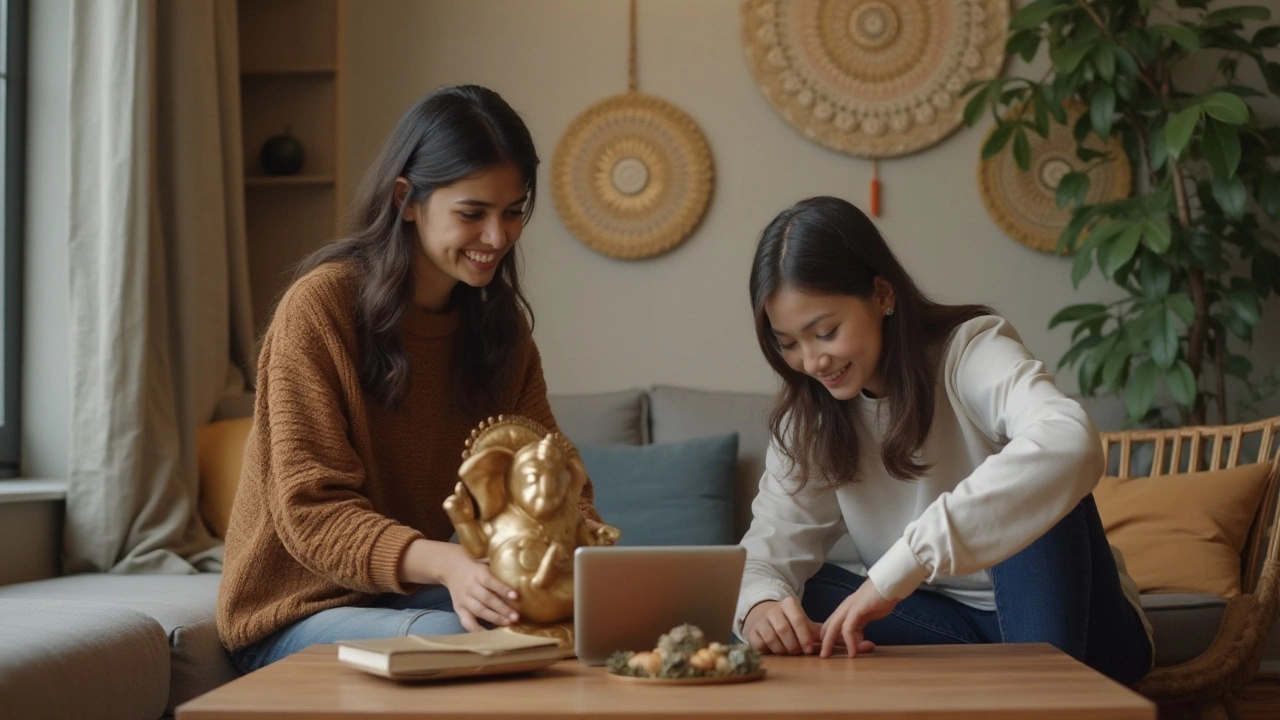
Skills to Develop
When setting off on the journey of becoming a self-taught interior designer, there are several key skills that one must focus on developing. At the heart of interior design lies the ability to envision spaces in unique and functional ways. This blend of art and science demands a solid grasp of color theory; understanding how color influences mood and perception is vital. In fact, the colors you choose cannot only affect how a room looks but also how it makes people feel. To master this, immerse yourself in exploring the color wheel, learning about complementary and analogous colors, and how to harness them to create harmony or contrast in a space.
Another indispensable skill is spatial awareness, which involves the ability to optimize the use of space effectively. This requires you to think critically about how objects of varying sizes will fit together, and how people will interact with these objects within a room. Working with floor plans, both digital and hand-drawn, can help you visualize and experiment with different layouts. Consider conducting room walkthroughs with paper cutouts to simulate real furniture arrangement ideas. Learning to use software like SketchUp or AutoCAD can also enhance your proficiency in spatial planning.
Developing an eye for detail is equally critical in interior design. This encompasses everything from the textures and materials you choose to the nuances of lighting. Light can transform the appearance of colors and textures, and understanding how natural and artificial lighting combine can significantly impact the ambiance of a space. A useful approach might be to create mood boards or sample palettes for each project, drawing inspiration from things you love to see how various elements work together. Paying attention to small details can elevate any design, ensuring cohesiveness and a polished look.
Communication skills should not be overlooked, even if you are working independently. As you delve deeper into design, you may find yourself explaining your ideas to friends, family, or even potential collaborators. Clear and concise communication can help you articulate your vision and receive constructive feedback. Engage in communities or online platforms dedicated to design discussions. Here, asking questions and sharing insights can broaden your perspective and inspire creative solutions. As Cheryl Durst, CEO of the International Interior Design Association, once said,
“Design is not just what you see, but what you make others see.”In the final analyses, adaptability stands out as a crucial skill in this ever-evolving field. Trends and technologies in interior design are continually changing, and a good designer must be flexible enough to adapt and learn. Stay updated by following design blogs, attending webinars, or subscribing to design magazines. By keeping a finger on the pulse of the latest developments in interior design, you ensure your style remains contemporary and relevant. Whether you're creating a DIY interior design project or planning to take your skills to the next level professionally, these foundational skills are the cornerstone of any successful design venture.
Practical Tips for Beginners
Embarking on a journey into interior design as a beginner can be both thrilling and intimidating. The key is to start with the basics, laying a solid foundation that allows your creativity to flourish. First, assess the space you want to transform. Consider its current layout and function before diving into the design. Observe how light enters the room at different times of the day, how furniture is placed, and the overall flow. Understand the fundamental principle of form and function. Aesthetics matter, but the practicality of each design element will ensure the space is livable and comfortable.
An important first step is to create a mood board. Gather ideas and inspiration from magazines, online platforms like Pinterest, and even movies. This will help you visualize your design style and identify patterns or color schemes. Assemble swatches of materials, paints, or textiles that appeal to you, so you have a tangible reference. As novelist Edith Wharton once wrote,
"There are two ways of spreading light: to be the candle or the mirror that reflects it."Use this concept metaphorically by either creating new design energy in your space or reflecting and enhancing what's already there.Another useful approach is experimenting with color and lighting, which can drastically change the ambiance of a room. Choose a palette of three complementary colors to avoid overwhelming the senses. Natural light enhances colors beautifully, so maximize it where possible; use light fabrics for windows and place mirrors strategically to reflect daylight around the room. At night, layer lighting using different sources like floor lamps, table lamps, and overhead fixtures to create a sophisticated look.
Consider investing in multi-functional furniture pieces, especially if you're working with a smaller space. A sofa bed, for example, can transform a living room into a guest room with ease. When selecting furniture, think about scale and proportion. Items that are too large or too small can disrupt balance and harmony within a space. Knowing how to arrange these pieces is just as important as selecting them. Aim for an inviting layout that encourages movement and interaction without feeling cluttered or bare.
Learning about texture variation is another tip that often distinguishes amateur designs from polished ones. Layering different textures—such as smooth ceramics, rough woods, plush fabrics, and metallic accents—adds depth and interest. Pay attention to the mix of materials, ensuring they complement rather than clash against one another. Incorporating plants into your design also adds a layer of texture and a vibrancy that’s hard to replicate with artifice.
Finally, begin thinking like a storyteller, where each room in your home tells a part of a larger narrative. Use decoration pieces with personal stories or significant meaning. Display books, heirlooms, or art that reflects your personality and experiences. This personal touch doesn’t just make a house feel like a home; it adds a layer of warmth and authenticity that can’t be bought or duplicated. By following these DIY interior design ideas, you’re well on your way to creating spaces that are not only beautiful but also deeply personal and functional.

Inspiration and Creativity
Embarking on a journey to teach yourself interior design is as much about finding inspiration as it is about acquiring technical skills. Inspiration can come from various sources, and nurturing your creativity is a vital component of transforming ideas into tangible designs. When you open yourself up to different styles and perspectives, you enhance your ability to create unique and personalized spaces. To begin, consider paying attention to your everyday surroundings; sometimes inspiration strikes in the unlikeliest of places. For instance, a walk in nature can influence color palettes and pattern choices, with the vibrant green of a eucalyptus leaf sparking a new idea for a home decor theme.
When seeking inspiration, one useful strategy is to explore art galleries or museums, which offer an abundance of historical and contemporary designs that could influence your own projects. In addition to visual stimulus, reading about the lives and works of notable interior designers can offer valuable insights. Take, for instance, the words of esteemed designer Frank Lloyd Wright, who once said, "Form and function should be one, joined in a spiritual union." Such perspectives can shape the way you approach the aesthetics and functionality of your space.
To cultivate creativity, it's also helpful to engage with digital platforms like Pinterest or Instagram, where global trends and key styles are at your fingertips. These platforms are invaluable for visual learners who prefer to see ideas in action. You might start creating mood boards—a handy way to consolidate themes, colors, and styles you wish to incorporate into your designs. When crafting a mood board, aim for a balanced mixture of textures and hues to avoid overwhelming your space. Keep checking in on emerging trends, but remember that timeless designs often blend both contemporary and classic elements seamlessly.
Don't forget that social media also allows you to connect with a community of like-minded enthusiasts. Engaging with fellow learners can encourage idea sharing and constructive critique, which are fundamental in developing your DIY interior design skills. As you continue to experiment, try adopting a hands-on approach: get involved in small projects, such as upcycling furniture or rearranging the layout of a room. These explorations build practical understanding and boost your self-confidence. Ultimately, the more you allow yourself to experiment and play with design, the more you'll discover your own style, which will be unique and tailored to your tastes.
